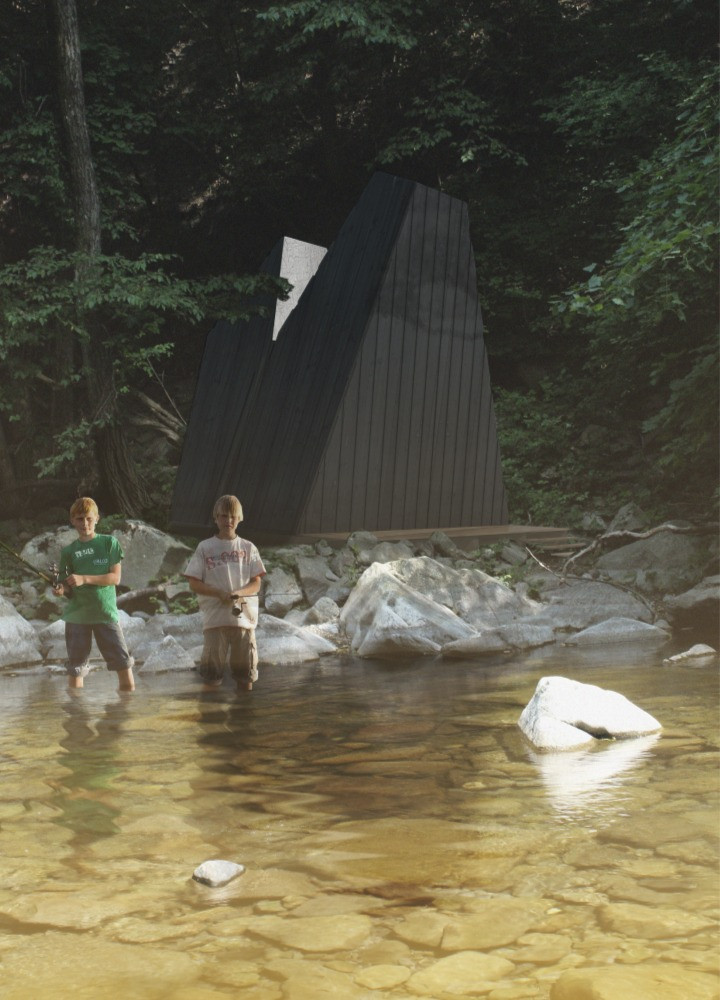5 key facts about this project
At its core, The Hand House functions as more than a physical structure; it is a reflection of modern ecological practices and a response to contemporary needs for sustainable living. The cabin is designed to accommodate individuals or small groups seeking solace and a reconnection with nature, offering an escape from the fast-paced urban life. The layout supports various activities, whether it is quiet contemplation, artistic endeavors, or communal gatherings, fostering a versatile living experience.
The architectural design of The Hand House is notable for its unconventional form. The structure features angular planes that draw inspiration from the concept of folded hands, which creates a unique silhouette that interacts harmoniously with its environment. This design approach emphasizes both aesthetic appeal and functional responsiveness. The distinctive peaks and intersecting surfaces not only enhance visual interest but also serve practical purposes, such as directing rainwater or maximizing roof overhangs to provide shading.
Materiality plays a pivotal role in the overall success of the project. The Hand House employs sustainably sourced materials, including plywood and timber, which contribute to the project’s low environmental impact. The exterior features blackened wood, chosen for its durability and ability to blend seamlessly into the wooded landscape. Additionally, the use of large glass windows throughout the cabin fosters transparency between the interior and exterior spaces, allowing natural light to flood in and providing unobstructed views of the surrounding nature.
Inside, the design prioritizes open spaces and minimalistic aesthetics. The central area functions as a gathering space, designed for flexibility to accommodate various uses. Built-in furnishings streamline the interior, reducing clutter while enhancing functionality. The arrangement of spaces encourages movement and interaction, allowing occupants to appreciate the calmness of the environment surrounding them. Careful attention has been given to how light and privacy are managed, further enriching the living experience.
Unique design approaches within The Hand House emphasize its role as a catalyst for environmental consciousness. Embracing renewable energy solutions such as solar panels, the project highlights its commitment to reducing its ecological footprint. The thoughtful dialogue established between the architectural design and its natural surroundings fosters a greater awareness of sustainability and encourages inhabitants to adopt similar practices in their daily lives.
The Hand House stands as a reminder of the importance of integrating architecture with nature authentically and meaningfully. The project illustrates how design can promote coexistence with the environment, offering a functional and aesthetically pleasing space that serves as a model for future architectural endeavors. For those interested in exploring this project further, a closer examination of the architectural plans, sections, and design ideas will provide deeper insights into its innovative approaches and underlying philosophies. Engaging with the complete presentation of The Hand House will reveal the intricate details that contribute to its success in harmonizing human habitation with the natural world.


























